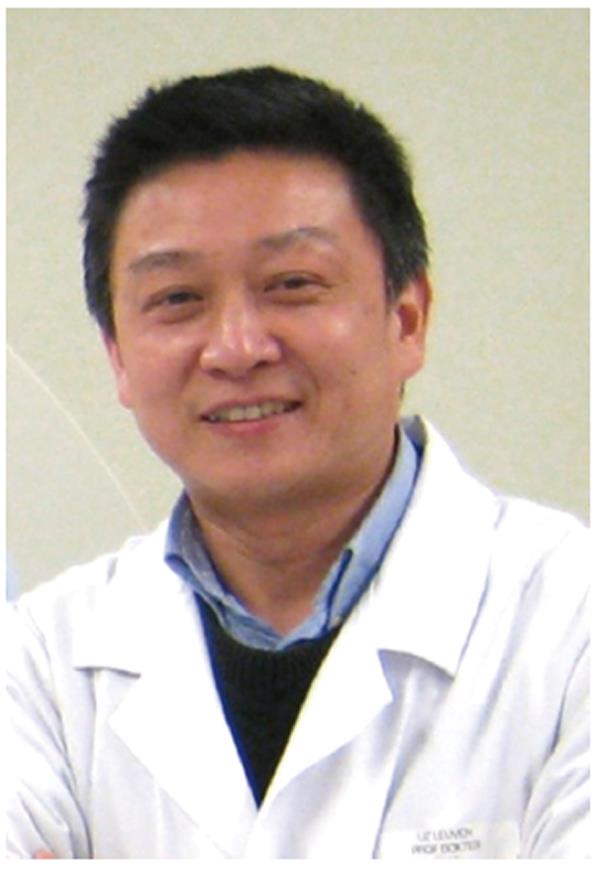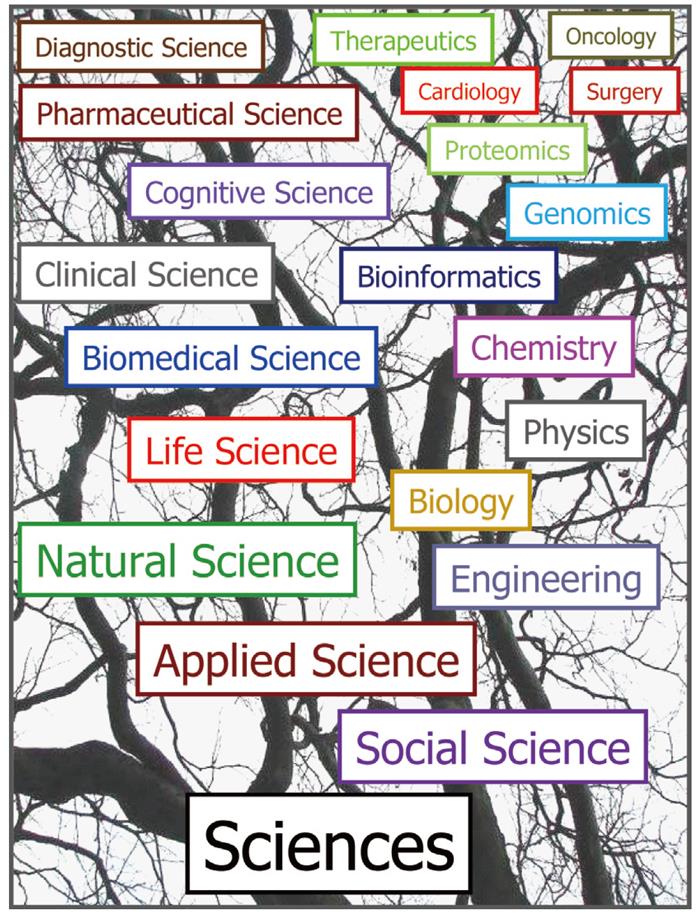Revised: September 1, 2011
Accepted: September 19, 2011
Published online: September 26, 2011
Congratulations to the publisher, members of the editorial board of the journal, all the authors and readers for launching the World Journal of Methodology (WJM) as a new member of the World series journal family! Scientific advances and important breakthroughs have been facilitated by well developed methodologies or techniques and any misleading findings and theories are exclusively attributable to certain methodological defects. Thus, the role of appropriate methodologies in the development of science and technology cannot be overemphasized and the need for inaugurating this new journal is self-evident. The WJM is a peer-reviewed open-access periodical centered in biomedical sciences but with multidisciplinary coverage. If you want to share any new methodologies, any experiences of the application or improvement of such methodologies and any methodology-related academic issues with your peers, you will find the WJM a good media to publish your papers!
-
Citation: Ni Y. What is the purpose of launching the
World Journal of Methodology ? World J Methodol 2011; 1(1): 1-3 - URL: https://www.wjgnet.com/2222-0682/full/v1/i1/1.htm
- DOI: https://dx.doi.org/10.5662/wjm.v1.i1.1
I am Yicheng Ni (Figure 1), a full professor from University of Leuven, Belgium and the editor-in-chief of World Journal of Methodology (WJM). It is my great honor to introduce the WJM as a new forum for exchanging thoughts and experiences about any methodological approaches to solving problems in research in both fundamental and clinical medicine. Congratulations to the publisher, members of editorial board of the journal, all the authors and readers for this memorable event!
I am very pleased to announce that the first issue of the WJM, on which preparation was initiated on April 5, 2011, is officially published on September 26, 2011. The WJM Editorial Board has now been established and consists of 238 distinguished experts from 41 countries. What is the purpose of launching WJM? And what is the scope and how are the columns designed? These are some of the subjects I would like to address hereunder.
The word methodology refers to a process involving definitions, explanations and procedures applied as a guideline to collect, store, analyze and present information in the practices of a particular research discipline. Methodology addresses how to solve problems with specified components such as tasks, tools, techniques, methods, phases, etc.
Historically, scientific advances and important breakthroughs have all been facilitated by well developed methodologies or techniques[1-5]. Likewise, any findings, conclusions and theories that temporarily predominated but later were proved wrong and misleading can be attributed to their methodological defects[6-8]. Therefore, the role of appropriate methodologies in the development of science and technology cannot be overemphasized and the need for inaugurating this new journal is without any doubt.
The WJM aims to rapidly report the most recent results in medical diagnostics, therapeutic techniques and equipment, clinical medical research, clinical and experimental techniques and methodology. It provides a platform to facilitate the integration of clinical medicine and experimental techniques and methodology to help clinicians improve diagnostic accuracy and therapeutic efficacy. The journal publishes original articles and reviews on the following topics: (1) Clinical medical techniques, including but not limited to those for pharmaceutical medicine, laboratory medicine, radioactive medicine, medical imaging, nuclear medicine, physical therapy, pathology, surgery, disinfection, nutritional therapy, transfusion and medical equipment; (2) Clinical medical research on etiology, epidemiology, pathogenesis, morphology and function, signs and symptoms, clinical trials, and evidence-based medicine; and (3) Laboratory methodology, including but not limited to techniques in DNA/RNA sequencing, preparation and transformation of competent cells, polymerase chain reaction, protein biochemistry, cell biology, genetics and epigenetics, immunology, microbiology, animal models of human pathologies, bioinformatics, and laboratory equipment manipulation and control. Since biomedical science stems from natural science as a relatively young branch and has been fostered by the methodologies of almost all other science branches, the scope of the WJM can be immensely broad or virtually unlimited as illustrated by a few examples in Figure 2.
The columns in the issues of the WJM include: (1) Editorial: to introduce and comment on major advances and developments in the field; (2) Frontier: to review representative achievements, comment on the state of current research and propose directions for future research; (3) Topic highlight including the following three formats (A) 10 invited review articles on a hot topic; (B) a commentary on common issues of this hot topic; and (C) a commentary on the 10 individual articles; (4) Observation: to update the development of old and new questions, expose unsolved problems and propose strategies on how to solve such problems; (5) Guidelines for Basic Research: to provide guidelines for basic research recommended by scientific communities; (6) Guidelines for Clinical Practice: to provide guidelines and consensuses for clinical diagnosis and treatment reached by international and national academic authorities; (7) Review: to systemically review progress and obstacles in the field, comment on the state of current research and make suggestions for future work; (8) Original Articles: to report innovative and original findings in basic and clinical medical research with emphasis on methodological aspects; (9) Brief Articles: To briefly report novel findings with improvement in basic and clinical medical research methodology; (10) Case Report: to report a rare, atypical or interesting case; (11) Letters to the Editor: to discuss and reply to the comments on the contributions published in the WJM or to introduce and comment on a controversial issue of general interest; (12) Book Reviews: to introduce and comment on quality monographs of basic and clinical medical research methodology; and (13) Voices: to publicize methodology-related communications that have been rejected or impossible for publication elsewhere due to evident prejudice and/or unreasonable reasons. Similarly, your experiences of the proven mistreatment during the past grant applications can be narrated or documented in this corner. The corresponding responses and echoes from readers are also welcome here.
So, if you want to share any new methodologies, any experiences on the application or improvement of such methodologies in biomedical research and any methodology-related academic issues with your peers, the WJM is a place you can feel at home!
Peer reviewer: Alberto Chiesa, MD, Institute of Psychiatry, University of Bologna, Viale Carlo Pepoli 5, 40123 Bologna, Italy
S- Editor Wang JL L- Editor Roemmele A E- Editor Zheng XM
| 1. | Lander ES. Initial impact of the sequencing of the human genome. Nature. 2011;470:187-197. [RCA] [PubMed] [DOI] [Full Text] [Cited by in Crossref: 733] [Cited by in RCA: 617] [Article Influence: 44.1] [Reference Citation Analysis (1)] |
| 2. | Monaghan P. Telomeres and life histories: the long and the short of it. Ann N Y Acad Sci. 2010;1206:130-142. [RCA] [PubMed] [DOI] [Full Text] [Cited by in Crossref: 183] [Cited by in RCA: 185] [Article Influence: 12.3] [Reference Citation Analysis (1)] |
| 3. | Welch GR, Clegg JS. From protoplasmic theory to cellular systems biology: a 150-year reflection. Am J Physiol Cell Physiol. 2010;298:C1280-C1290. [RCA] [PubMed] [DOI] [Full Text] [Cited by in Crossref: 26] [Cited by in RCA: 27] [Article Influence: 1.8] [Reference Citation Analysis (1)] |
| 4. | Ni Y, Wang H, Chen F, Li J, DeKeyzer F, Feng Y, Yu J, Bosmans H, Marchal G. Tumor models and specific contrast agents for small animal imaging in oncology. Methods. 2009;48:125-138. [RCA] [PubMed] [DOI] [Full Text] [Cited by in Crossref: 29] [Cited by in RCA: 33] [Article Influence: 2.1] [Reference Citation Analysis (1)] |
| 5. | Li J, Sun Z, Zhang J, Shao H, Miranda Cona M, Wang H, Marysael T, Chen F, Prinsen K, Zhou L. A Dual-targeting Anticancer Approach: Soil and Seed Principle. Radiology. 2011;260:799-807. [RCA] [PubMed] [DOI] [Full Text] [Cited by in Crossref: 67] [Cited by in RCA: 77] [Article Influence: 5.5] [Reference Citation Analysis (1)] |
| 6. | Ni Y, Dymarkowski S, Chen F, Bogaert J, Marchal G. Occlusive myocardial infarction enhanced or not enhanced with necrosis-avid contrast agents at MR imaging. Radiology. 2002;225:603-65; author reply 603-65;. [RCA] [PubMed] [DOI] [Full Text] [Cited by in Crossref: 10] [Cited by in RCA: 11] [Article Influence: 0.5] [Reference Citation Analysis (1)] |
| 7. | Ni Y. Metalloporphyrins and Functional Analogues as MRI Contrast Agents. Curr Med Imaging Rev. 2008;4:96-112. [RCA] [DOI] [Full Text] [Cited by in Crossref: 58] [Cited by in RCA: 58] [Article Influence: 3.4] [Reference Citation Analysis (1)] |
| 8. | Ni Y, Mulier S, Miao Y, Michel L, Marchal G. A review of the general aspects of radiofrequency ablation. Abdom Imaging. 2005;30:381-400. [RCA] [PubMed] [DOI] [Full Text] [Cited by in Crossref: 157] [Cited by in RCA: 153] [Article Influence: 7.7] [Reference Citation Analysis (1)] |










